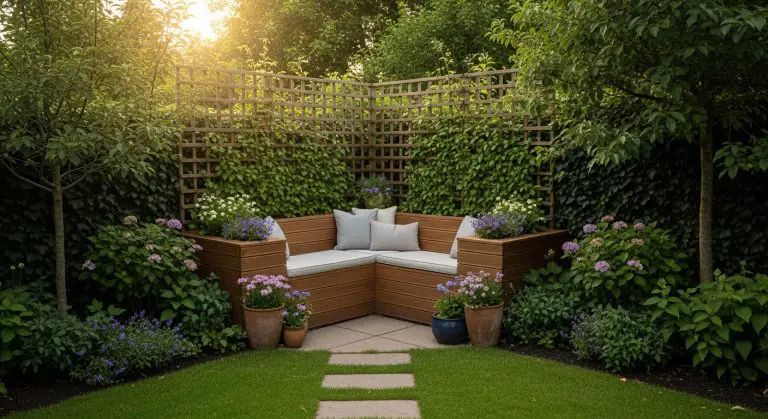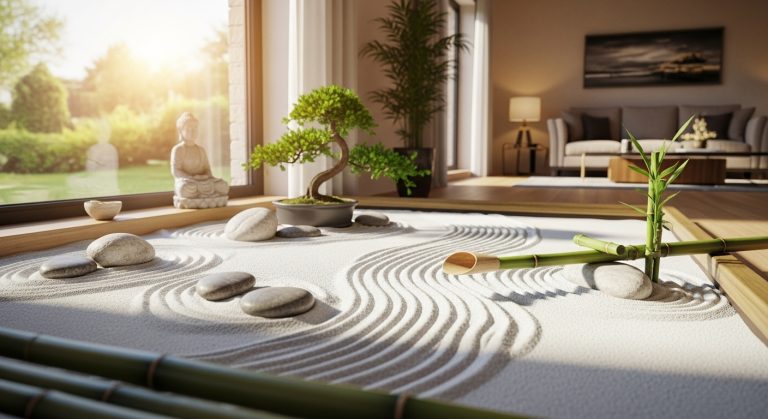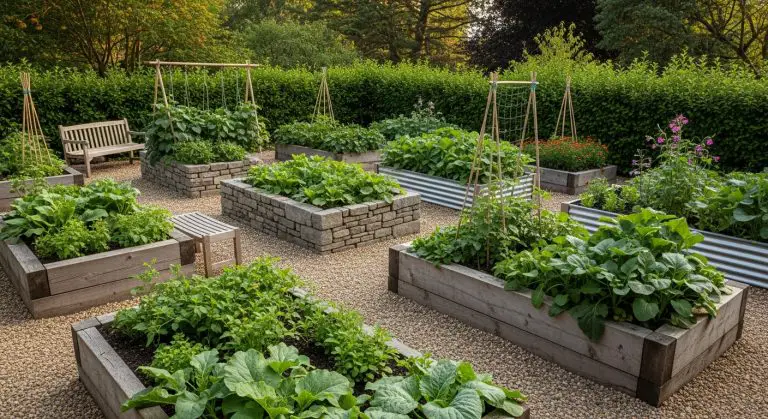Magical Garden Fairytale: 15 Enchanting Ideas for Your Outdoor Escape
Ever found yourself day-dreaming in the garden, wondering what it would be like if that patch of grass could transport you into a storybook? I’ve been there—standing barefoot on cool turf, birds overhead, and thinking: what if this space could feel magical, like a real “garden fairytale”? That’s exactly why I’m so excited about transforming ordinary yards into magical garden fairytale settings.
Today, I’m chatting with you like we’re on a veranda with iced tea in hand, and walking through 15 ideas to turn your outdoor space into something whimsical, immersive and alive. We’ll unpack each concept with pros, cons, and my honest take (yes, including the messy bits). If some sound quirky, good—they should. A fairytale garden isn’t about playing safe. Let’s sprinkle some magic.
1. Winding Pathways That Whisper Secrets
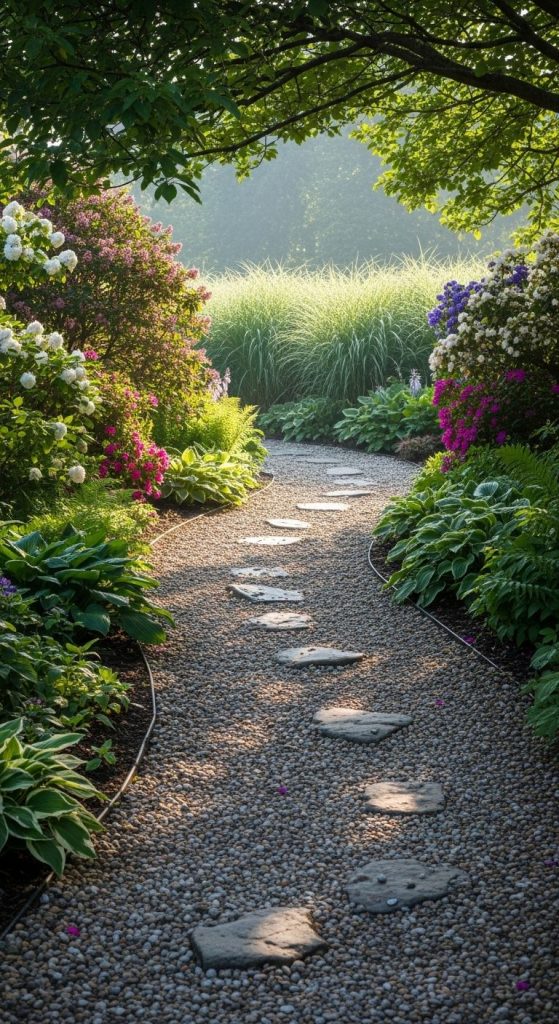
Picture a gently curving stone or gravel path that disappears behind shrubs—makes you feel like you’re exploring. That’s the vibe of a garden fairytale pathway.
Pros:
- Invites movement and discovery, rather than destination-only.
- Adds structure and flow to your garden layout—your space feels more layered.
- Works with all sizes of gardens; even a mini winding path adds intrigue.
Cons:
- Complex paths can require more groundwork (drainage, leveling) to avoid uneven surfaces.
- If over-designed, the “secret” feel fades and it ends up looking contrived.
Takeaway: A curved path does more than move you—it invites wonder. imo, that’s a subtle but powerful magic trick.
2. Twinkling Lights & Evening Ambience
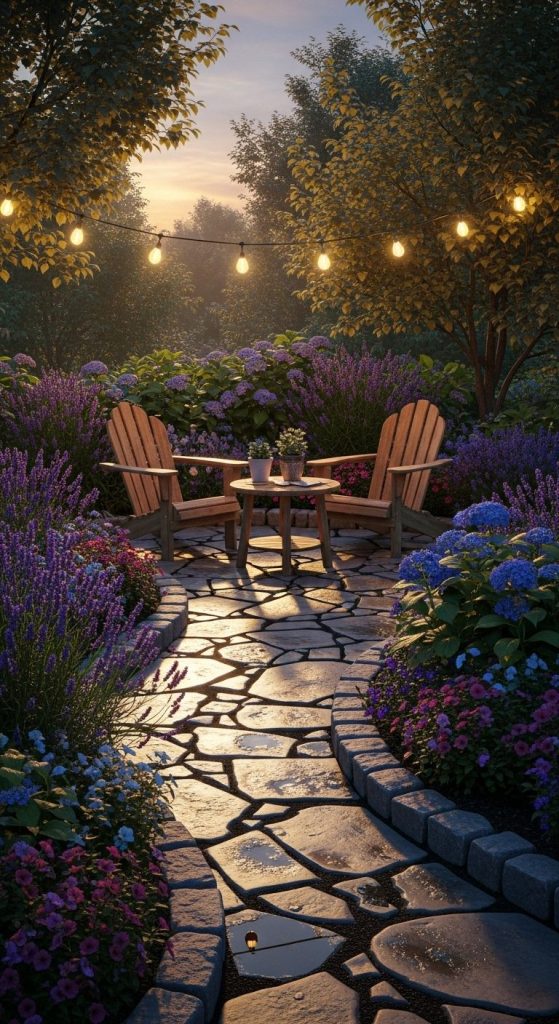
When dusk falls, that’s when a magical garden fairytale truly glows. Think lanterns, string lights, hiding fairy-lights in trees.
Pros:
- Extends your garden use into evenings—it becomes part of your lifestyle, not just daytime.
- Soft lighting emphasizes textures (leaves, bark, walls) and adds drama naturally.
- Creates atmosphere rather than just “Looks good in daytime” which most gardens forget.
Cons:
- Outdoor lighting means wiring or solar, maintenance, possibly cost.
- If you get lighting wrong it can feel tacky or like a disco—balance matters.
Takeaway: Light isn’t just functional—it’s storytelling. In a magical garden fairytale, the night is as inviting as the day.
3. Secret Nooks & Hidden Corners
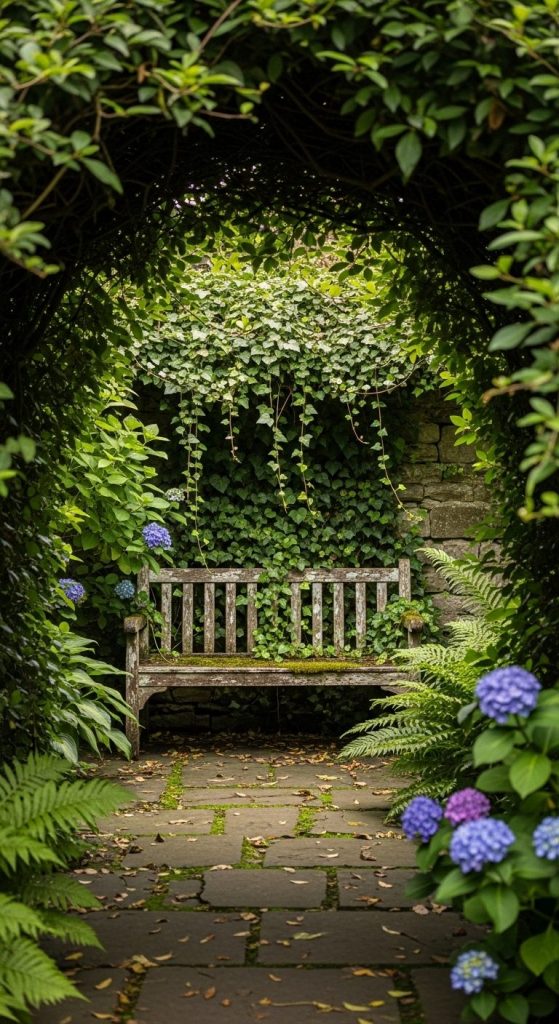
One of my favourite moments: turning a neglected corner into a bench tucked beneath foliage—instant fairytale nook. Voilà.
Pros:
- Gives intimate spaces within a larger garden, so you feel enclosed and safe—like a storybook hideaway.
- Encourages us to linger, read, sip tea, or just daydream.
- Adds depth visually and emotionally; your garden becomes more than one open field.
Cons:
- Might make the garden feel smaller or segmented if too many nooks compete.
- Requires thoughtful layout so the hidden corner doesn’t look like a neglected gap.
Takeaway: Every magical garden fairytale needs a secret place to pause. Build one, and you’ll find yourself using it often.
4. Arches, Trellises & Vertical Greenery
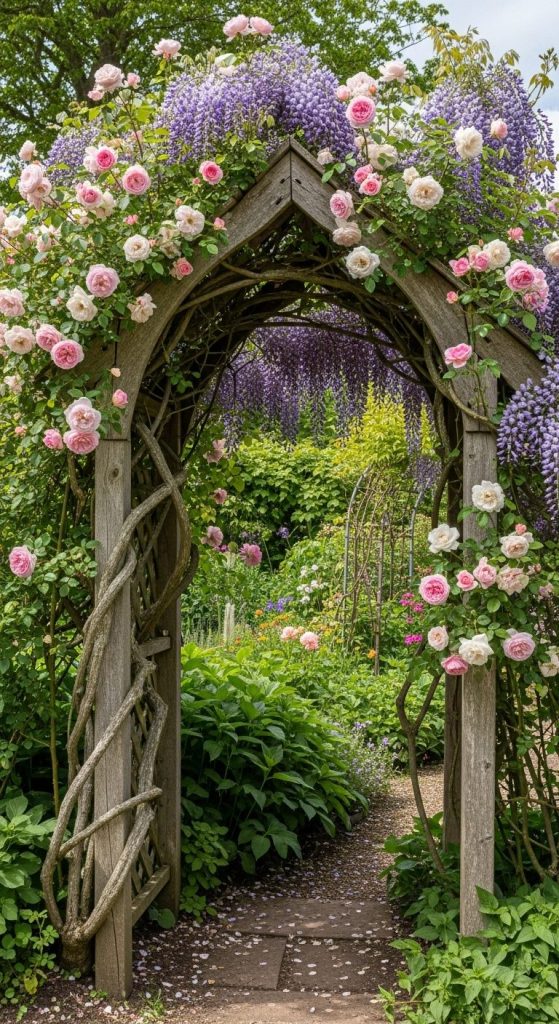
Climbing roses, wisteria, hammocks under a wooden arch… These vertical elements help a garden feel enchanted from every angle.
Pros:
- Adds height and layers—so your eye moves up, not just across.
- Creates a sense of enclosure & enchantment—like entering a different world.
- Supports climbers and greenery beautifully, integrating nature with structure.
Cons:
- Structural elements (trellis, arch) cost time and materials; need firm installation.
- Climbers need care—training, pruning, sometimes messy.
Takeaway: Vertical elements turn ordinary beds into portals. That’s the heart of the magical garden fairytale feeling.
5. Reflective Water Features

A pond, a fountain, or a simple bird-bath with a little ripple: water brings sound, movement and that “fairytale” dimension naturally.
Pros:
- Adds soundscape (water trickle) which deepens immersion and calm.
- Reflects light and surroundings—doubling your visual interest.
- Attracts wildlife—frogs, birds—which adds life and story to the space.
Cons:
- Maintenance is required (cleaning, pumps, leaves).
- Safety considerations if kids/pets around water.
Takeaway: Water doesn’t just decorate—it animates a magical garden fairytale, giving you movement and breath.
6. Bold, Lush Planting with White & Pastel Accents

I once planted only one tonally unified bed of foxgloves and hydrangeas—it felt like stepping into a painting. That is part of the magic.
Pros:
- Dense, lush plants feel immersive—your garden stops feeling like separate elements and starts feeling like a world.
- Pastels and whites reflect light softly, making rooms feel bigger and more ethereal.
- Repetition and rhythm in planting make the garden feel intentional, not random.
Cons:
- High-impact beds need proper soil, sun/shade analysis and maintenance.
- If you go too “matchy”, the space can feel contrived rather than natural.
Takeaway: In a magical garden fairytale, plants do the heavy lifting for ambiance. Put them at the forefront.
7. Vintage Touches & Whimsical Props

A rusted wheelbarrow, a tiny fairy door at the base of a tree, or vintage lanterns hidden in foliage—these echo storybooks.
Pros:
- Adds personality, charm and tells your garden’s story.
- Props invite interaction—kids (and big kids) will explore.
- They build memory. You’ll remember that bench under the willow with fairy lights.
Cons:
- Props can date quickly or feel cluttered if overdone.
- Materials need endurance outdoors (rust, mildew, weather).
Takeaway: Iconic little touches shift a garden from “nice” to magical garden fairytale. Use them wisely.
8. Soft Curves vs. Rigid Lines
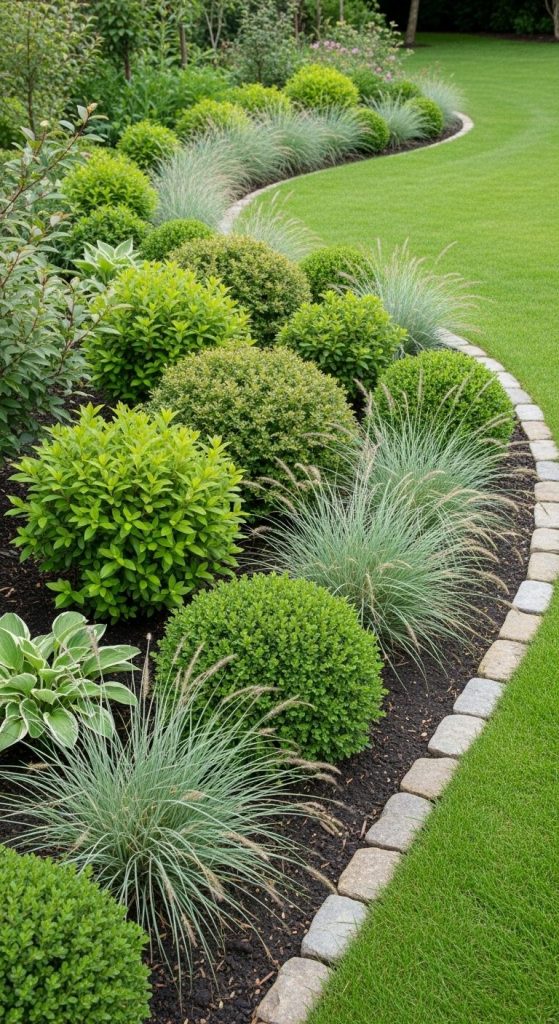
Straight lines have their place, but in a magical garden fairytale you’ll prefer soft edges: curved beds, meandering paths, natural shapes.
Pros:
- Curves feel organic, free, and invite you inwards rather than pushing you outward.
- They help visually soften hardscape and furniture.
- They reflect nature’s form better—less artificial, more immersive.
Cons:
- Harder to mow or maintain in some cases; irregular edges require more care.
- If layout is too random, it can lack coherence and feel unplanned.
Takeaway: Balance is key. A mix of curves and structure gives you the best of both worlds in a garden that feels magical.
9. Subtle Path Lighting & Hidden Glow

We’ve said lighting, but let’s zoom in: the magic hides in the nuance—low-level lighting at your feet, glow stones maybe, lanterns nestled in plants. Real Homes
Pros:
- Adds layer of ambience and depth—your garden comes alive after sunset.
- Makes pathways safe but still enchanting, not clinical.
- Creates silhouette and shadow play which feel dreamy and story-worthy.
Cons:
- Needs planning for wiring or solar; if too bright, you lose subtlety.
- Bulbs need replacing, maintenance overtime.
Takeaway: Tools like this whisper, not shout. In a magical garden fairytale, the lighting is subtle but transformative.
10. Seasonal Change & Year-Round Interest

Magical gardens don’t just peak in July—they shift, evolve and surprise you through seasons.
Pros:
- You’ll enjoy the garden beyond one “good month”.
- Changing palette keeps your interest and gives layers of memory.
- Wildlife (pollinators, birds) responds to seasonal change—more life = more enchantment.
Cons:
- Requires planning (spring bulbs, summer shrubs, autumn colour).
- Some plants require winter protection or higher upkeep.
Takeaway: A garden that evolves rather than fades gives you lifelong magic. Keep that in mind.
11. Garden Furniture That Feels Story-Ready
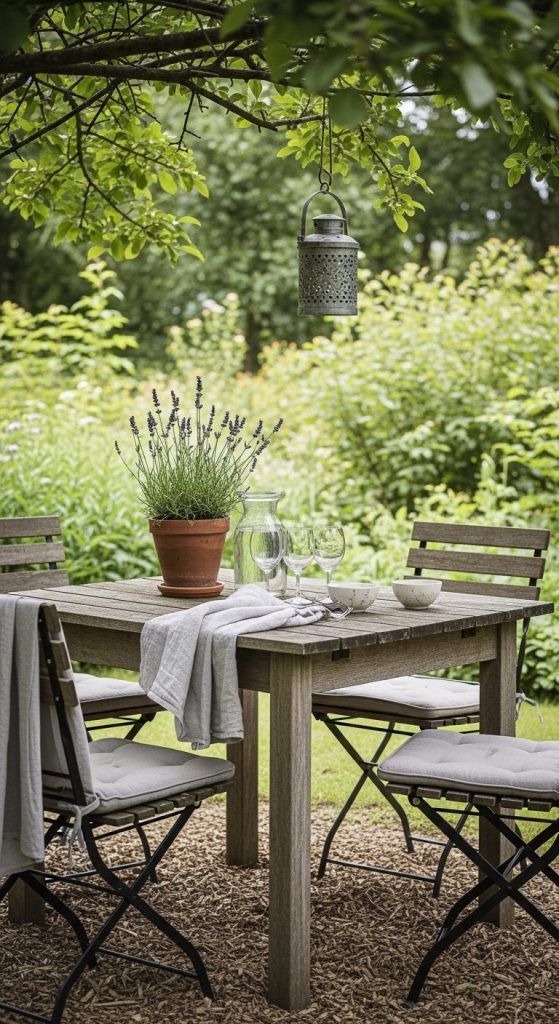
That bench isn’t just a seat—it’s a story location. In a magical garden fairytale, furniture invites you to linger, to live the scene.
Pros:
- Encourages you to stop and stay—important in a living space not just show space.
- Helps scale the garden; furniture defines human-level space and brings comfort.
- Choose vintage or classic pieces and you get continuity with the whimsical aesthetic.
Cons:
- Outdoor furniture needs durability and weather-proofing.
- Oversized furniture can dominate and reduce plant impact.
Takeaway: If your garden is going to feel like a story you step into, you need furniture that invites you to sit in that story.
12. Wildlife Friendly & Naturalistic Moments

Part of the enchantment is seeing life in motion: bees, butterflies, birds. A magical garden fairytale embraces nature, not fights it.
Pros:
- Increases biodiversity—good for the planet and your enjoyment.
- Wildlife adds movement and sound—key elements in immersive spaces.
- Natural-look plantings (meadows, natives) feel wild, lovely, less staged.
Cons:
- Some wildlife whether welcomed or not ( pests ) comes in.
- Naturalistic edges can look “unkempt” if you’re used to formal gardens.
Takeaway: Wild edges don’t mean sloppy—they mean alive. And in a magical garden fairytale, life is always moving.
13. Texture-Rich Materials & Foliage
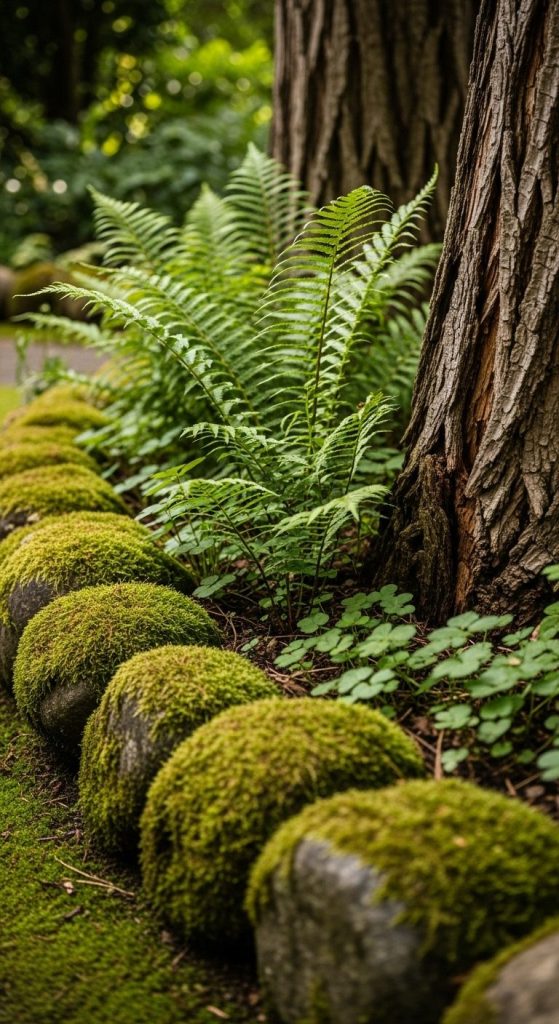
Think moss on stones, worn timber, soft leafed ferns, rough bark—all texture matters. The magic is tactile.
Pros:
- Rich textures catch the light and draw touch, making the space more immersive.
- Layered foliage (leaf shapes, sizes, tones) adds visual depth.
- Aged materials signal time, story, maturity—helping that fairytale aesthetic feel authentic.
Cons:
- Some textures (e.g., moss, wood) may require maintenance (cleaning, trimming).
- If you over-texture, the space may feel busy rather than calm.
Takeaway: A magical garden fairytale is not just what you see but what you feel under your fingers, shoes and gaze.
14. Colour Palette: Pastels, Whites & Deep Greens
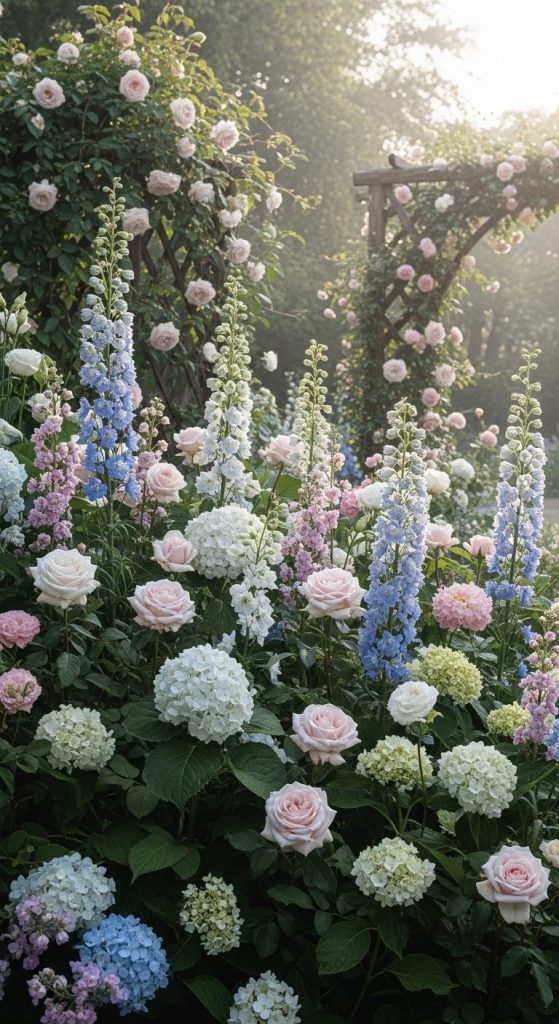
Colour in a fairytale garden isn’t neon—it thrives on soft whites, gentle pastels and rich greens. That palette sets the mood.
Pros:
- A restrained palette gives coherence and elegance.
- Pastels and whites reflect light beautifully and brighten shady areas.
- Deep greens anchor the space and make colour accents pop.
Cons:
- A limited palette needs good plant variety to avoid monotony.
- Lighter colours show wear and require upkeep (furniture, cushions, paint).
Takeaway: Colours speak emotionally. Choosing the right palette keystones your garden’s magical tone.
15. Personal Story & Memory in the Space

Finally, every magical garden fairytale thrives on the personal. The pebble you found, the bench you rebuilt—those things make it your tale.
Pros:
- Personalisation means the space resonates more deeply for you.
- Memories invested = more use and more love.
- Adds uniqueness—your garden becomes not an imitation but your own enchanted place.
Cons:
- If you personalise randomly and without cohesion, your garden can lose harmony.
- Too many “stuffed memories” may clutter and distract.
Takeaway: Plant memories as much as plants. That’s how you get a magical garden fairytale that lasts.
Conclusion
We’ve wandered through 15 distinct ideas—from winding paths and twinkling lights, to lush planting and hidden corners—all under the banner of creating a magical garden fairytale. What stands out to me is this: the magic isn’t in flawless perfection, but in intention, texture, memory, and life.
As I sip my iced tea and review these notes, I remember why I started this journey. It wasn’t just to make my backyard look pretty, but to feel like a place of calm, wonder, and purpose. I want you to get that feeling too. The kind of space that makes friends linger, children explore, and even you pause and breathe deeply.
Pick one idea to start. Perhaps the small bench tucked beneath a willow, or that fairy door at the tree base. Let it grow. Let the garden evolve. Because fairytales don’t pop up overnight—they unfold.
Your magical garden fairytale is out there—waiting for your first step down the winding path.

Ashley Ellison is a skilled writer and avid bowler. Her passion for storytelling and dedication to the sport have led her to participate in various national bowling leagues. With a unique combination of talents, Ashley approaches every challenge with creativity and a relentless drive to succeed.




